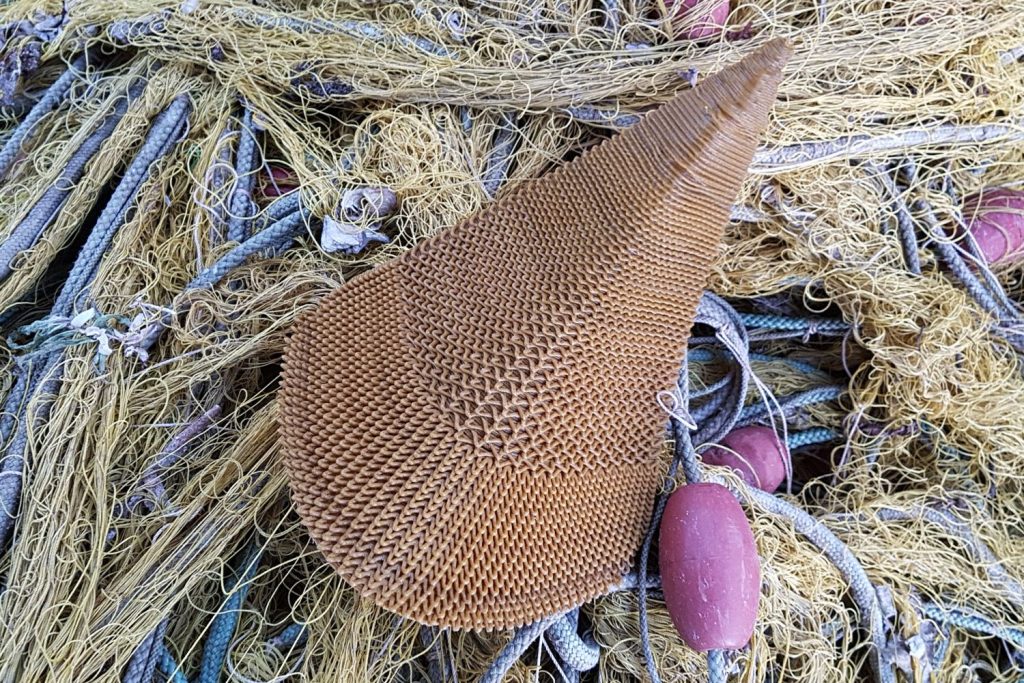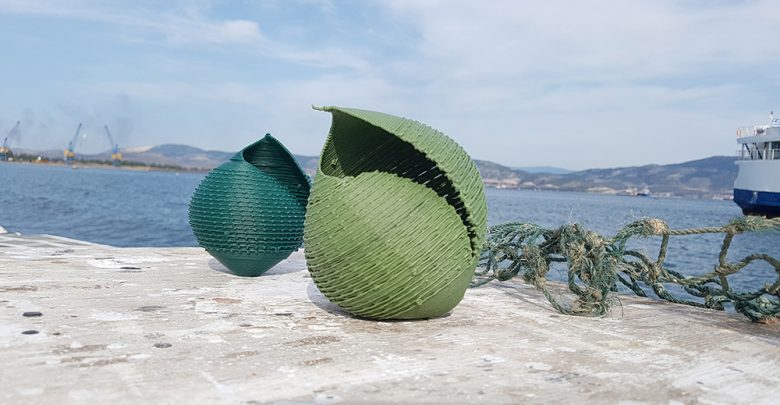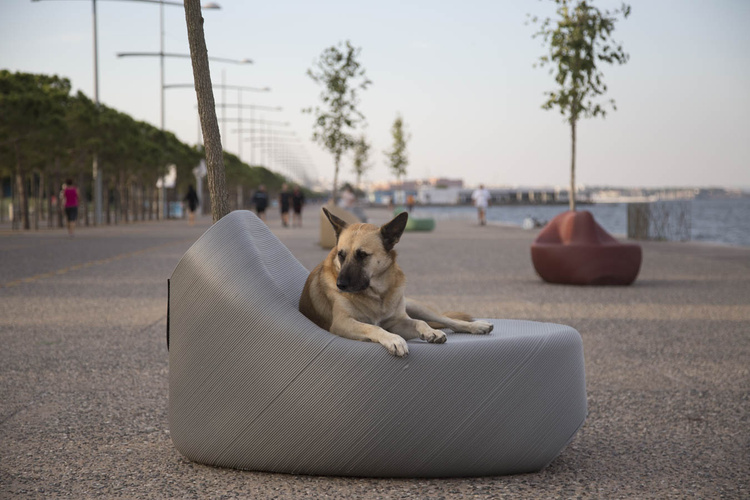In the pursuit of a solution to the challenges of global climate change, manufacturing is being held accountable. Many companies now run environmental initiatives, and 3D printing is often deemed a more “eco-friendly” alternative for production. In many instances, the method generates less waste than traditional processes and some materials, like PLA, are derived from renewable resources, taking the strain off of fossil fuels.
In light of recent proof of the rising levels in ocean plastic, one 3D printing project in particular stands out. The Rotterdam-based research and design studio The New Raw, and its Zero Waste Lab in Thessaloniki, Greece, are transforming ocean waste into 3D printed tableware, sculptures and furniture. Raising awareness for the upcycling potential in alternative manufacturing methods, the team exhibited some of their most recent efforts through the Second Nature project.
“Plastic is a major contributor to the pollution of the seas. However, living in urban regions, we tend to forget about our dependence on the sea, which is crucial to our food and oxygen supply,” state Panos Sakkas and Foteini Setaki, founders of The New Raw.
“With Second Nature, we want to give plastic a second life.”

Raising awareness with 3D printing
Synthetic fishing nets often become discarded on the seabed after getting cut off or lost by fishing vessels. These ‘ghost’ nets are considered to be the deadliest ocean debris and a major environmental threat.
Through Second Nature, undertaken with the support of maritime research champion The Aikaterini Laskaridis Foundation, The New Raw’s aims were to “re-imagine an ecosystem where marine plastic is the raw material for a new economy that uses technological and cultural innovation to bring about social change.”
Juxtaposing the beauty of natural marine environments with the harmful nature of ghost nets and other plastic pollution, the team first created a collection of 3D printed objects, including a series of seashell sculptures, made using recycled net plastic.
To create the filaments for this process, the team classified the ghost nets according to different material types: nets, ropes, floaters and weights. These different materials were then put through a grinder and extruded into colourful and textured filaments at its Zero Waste Lab.

From fishing nets to seashells
The finished design of these artificial shells are each inspired by a species of Mediterranean seashell that has been placed on a protected list due to intensive fishing practices.
“By nature, seashell geometry suits the layer-by-layer methods of 3D-printing technologies,” explain Sakkas and Setaki. “Rather than replicating their natural shapes, the 3D-printed version represents their geographically displaced entity, and embodies current environmental challenges.”
The project is accompanied by a 10-minute short film created award-winning documentary filmmaker Daphne Matziaraki. The film documents the studio’s research, revealing how marine plastic can become the raw material for a new circular economy.
Following the seashells, The New Raw has now moved on to the Print Your City project. Conducted in collaboration with fizzy drink aficionado Coca-Cola, this project is turning plastic bottles into street furniture (benches and plant pots) for public use in Rotterdam, Thessaloniki and, most recently, Rossana Orlandi gallery in Milan.

Commenting on this project, Sakkas and Setaki state, “Plastic has a design failure. It is designed to last forever, but often we use it once and then throw it away.”
“With Print Your City, we endeavour to show a better way of using plastic in long lasting and high value applications.”
Vote now in the 3D Printing for a Better World category in the 2019 3D Printing Industry Awards.
Subscribe to the 3D Printing Industry newsletter for the latest news in additive manufacturing. You can also keep connected by following us on Twitter and liking us on Facebook. Looking for a career in additive manufacturing? Visit 3D Printing Jobs for a selection of roles in the industry.
Featured image shows 3D printed homeware made from recycled plastic. Photo via The New Raw



